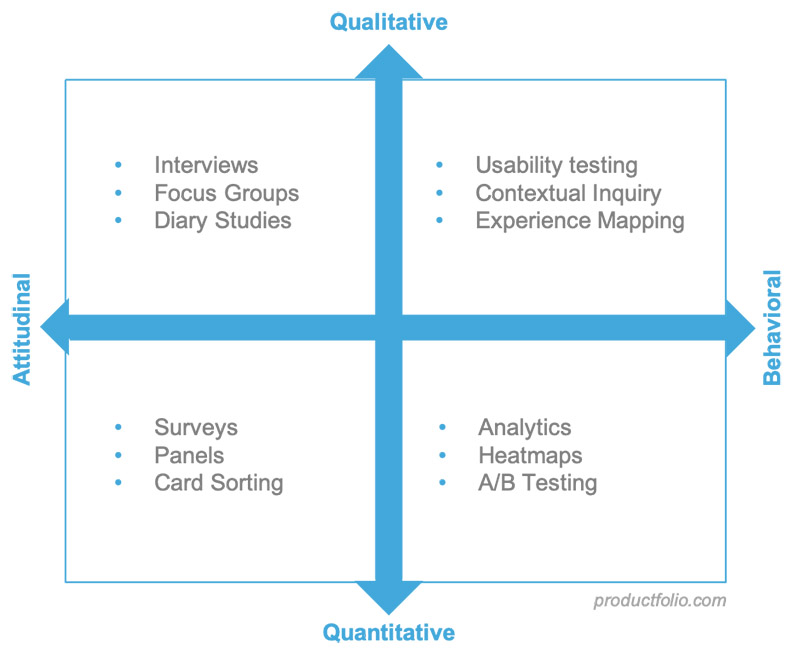
What is User Research?
User research refers to the practice of trying to understand the user, their needs, and thought processes. It is about taking in user behaviors, motivations, and experiences through observation or data-driven techniques.
When thinking customer-focused design process, user research is a vital prerequisite. Diverse methods can be used for carrying it out, ranging from ethnographic interviews to surveys and task analyses. Some individuals can regard it as somewhat synonymous with usability testing but user research is more than just that. It encompasses several methods, of which usability testing is just one.
Why You Need User Research
There are several reasons you should conduct user research. Let’s consider some of the most important ones.
Reason 1: It helps to ensure product-market fit
You don’t want to go on and create a product simply because you think customers would like it. It is through user research that you understand users as well as their needs and motivations. This helps you to build something more likely to resonate with them. It goes a long way in making sure you’re building something that customers would buy.
Reason 2: It supports a great experience
Learning about the user and their preferences aids in building for a wonderful experience. It can help you to make sure that users find your solution easy and enjoyable to use. In today’s world, it isn’t enough for a product to do what it promises; it needs to be intuitive as well.
Reason 3: It can save you money and time
Companies sometimes waste scarce resources to build solutions that users do not want. This is often the result of the desire to push something to the market quickly. They do not allow enough time to study the user and know what will cut it for them. In fact, this is what Lean methodology is all about. User research can help to eliminate or reduce the wasting of time and money. While it might seem to take time to do, it saves a lot more than the line. It ensures more effective use of funds.
Reason 4: It drives messaging
Finally, user research can help to use the right words and messages in pitching to customers. It will be useful for deciding what benefits marketing, advertising, and sales teams can emphasize more.
Types and Methods
There are different types of user research as well as methods used for executing it. According to Nielsen Norman Group, these can be divided into attitudinal and behavioral as well as qualitative and quantitative.
<

Attitudinal research – This type focuses on hearing what users have to say, such as through surveys and interviews.
Behavioral research – The aim of this is to observe user behavior since experience shows that what people say is often different from what they do. Usability testing and behavioral analytics aid in behavior research.
Qualitative research – User research of this type deals with non-numerical data that helps to get a deeper understanding of why customers behave a certain way. Interviews and other ethnographic studies are examples.
Quantitative research – This targets the generation of data that can be analyzed and measured to drive decisions. Examples include surveys that help to get responses you can use to identify patterns within a target user group.
A combination of the foregoing approaches can produce very effective results. In addition to interviews, surveys, and others above, methods for user research include:
- Task analysis
- A/B tests
- Usability testing
- Eyetracking
- Tree tests
- Card sorting
Use the Right Methods
The diverse methods for user research have specific situations they are most appropriate for. Nielsen Norman Group recommends that the stage of development should inform the right one to employ. This user experience authority, for instance, suggests using diary studies and contextual inquiries during the “Discover” stage. Card sorting and customer journey maps are for the “Explore” stage while the “Test” phase uses methods such as usability testing and accessibility evaluations. Surveys and analytics will find better use during the “Listen” stage of your project.
Special care is required when making a choice of method for your research. You want to make sure that they are appropriate for what you’re trying to achieve. Often, companies carry out user research when they are thinking of launching something new. It is, however, also crucial for making an existing offering to remain relevant to customers.